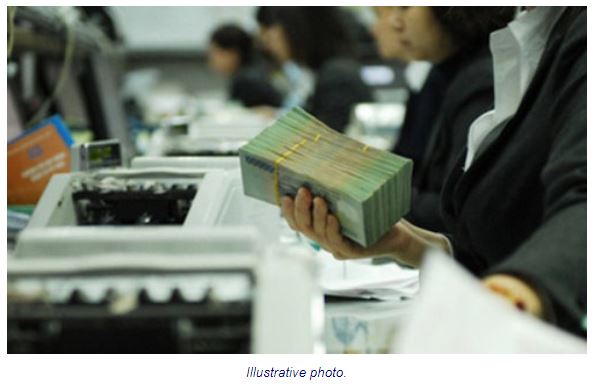Vietnam central bank hints monetary easing
The Hanoitimes – If the FED lowers the interest rate by the end of this month as expected, the move would have a minimal impact on the monetary policy of Vietnam’s central bank.
The State Bank of Vietnam (SBV), the country’s central bank, has recently expanded the credit growth quotas for a number of commercial banks, making many believe that the Vietnam’s central bank has opted for monetary easing.
However, SSI Securities Corporation, Vietnam’s largest brokerage house, in its latest report said the move was in line with the SBV’s agenda since the beginning of the year, referring to the actual credit growth rate in the first six-month of 2019 as ground for its assessment.
According to the SSI, the SBV set credit growth target for 2019 at 14%, however, the designated credit growth cap for commercial banks since early 2019 was much lower, at 11 – 13%, even at 7% for Vietnam Joint Stock Commercial Bank for Industry and Trade (VietinBank) and Saigon Thuong Tin Commercial Bank.
Moreover, excluding Joint Stock Commerical Bank for Foreign Trade of Vietnam (Vietcombank), eight commercial banks qualified for Basel II standards have a combined outstanding loan balance VND1,100 trillion (US$47.28 billion).
An expansion in credit growth limit for all eight lenders in subject would increase their outstanding loans by VND46 trillion (US$1.97 billion), equivalent to 0.6% of the total in the banking system.
According to SSI report, the SBV has cut the interest rate of treasury bills to 2.75% per year for the 7-day bills, down 25 basic points compared to the 3% rate since last October.
A reduction in the interest rate for treasury bill is expected to encourage market participants pumping money into the economy, instead of the SBV, stated the report.
Last week, the SBV also injected net amount of VND19 trillion (US$816 million) to the economy via treasury bill issuance, while the inter-bank exchange rate has been on the decline for a week, standing at 3.08% for the overnight rate and 3.18% for the one-week loans, down 10 and 12 basic points compared to one week earlier.
Since the end of 2015, although the US Federal Reserves (FED) has moved to increase its key interest rates, the SBV’s interest rate for treasury bills and rates via open market operation (OMO) channel have been stable, indicating that the SBV has managed monetary policy in a flexible manner.
The SBV’s longstanding target is to maintain stable monetary policy, and remains cautious about managing the cash flow and credit growth quality.
SSI said if the FED trims the interest rate by the end of this month as expected, the move would have minimal impact on the SBV’s monetary policy. Moreover, the SBV would be in a favorable position to pursue its monetary goal because pressures on exchange rate have been waned.
Source: http://www.hanoitimes.vn/economy/2019/07/81E0D9CB/vietnam-central-bank-hints-monetary-easing/


 English
English




